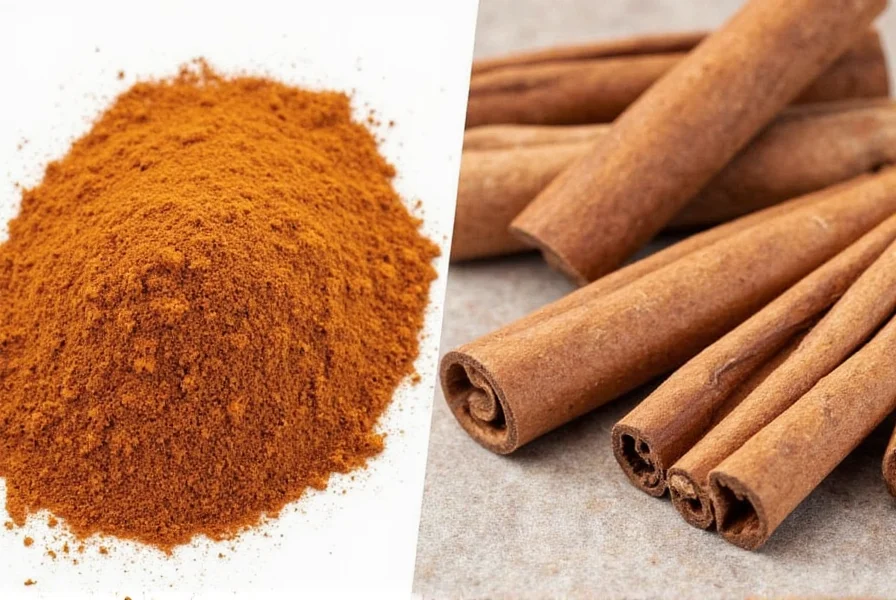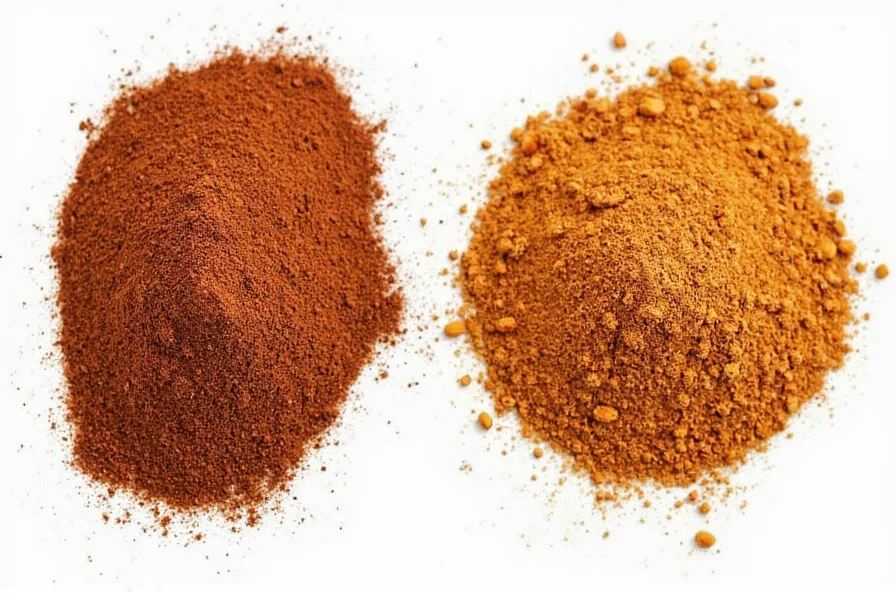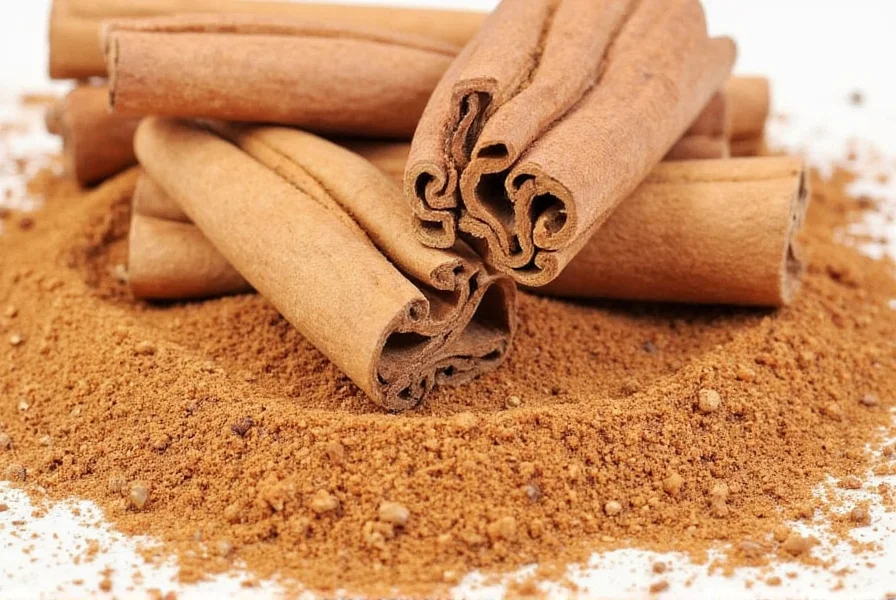Ceylon cinnamon (Cinnamomum verum) is "true cinnamon" with a delicate, sweet flavor and significantly lower coumarin content (0.017%), making it safer for regular consumption. Saigon cinnamon (Cinnamomum loureiroi), a cassia variety, has a stronger, spicier taste with much higher coumarin levels (6.97%), requiring moderation in use. The key difference lies in coumarin content, flavor profile, and safety for daily consumption.
When comparing ceylon cinnamon vs saigon cinnamon, understanding their fundamental differences is crucial for both culinary applications and health considerations. These two popular cinnamon varieties often get confused in grocery stores, yet they possess distinct characteristics that affect flavor, safety, and best uses in cooking and wellness routines.

Botanical Origins and Physical Characteristics
Ceylon cinnamon, scientifically known as Cinnamomum verum (meaning "true cinnamon"), originates from Sri Lanka and southern India. Its bark forms multiple thin, delicate layers that create a tight, hollow quill resembling a cigar. When broken, Ceylon cinnamon reveals a light brown color with multiple papery layers.
Saigon cinnamon, a variety of cassia (Cinnamomum loureiroi), comes primarily from Vietnam. It features a single, thick, hard bark layer that's difficult to break. The color is darker reddish-brown, and the quills are typically sold as broken pieces rather than intact tubes due to their brittle nature.
| Characteristic | Ceylon Cinnamon | Saigon Cinnamon |
|---|---|---|
| Scientific Name | Cinnamomum verum | Cinnamomum loureiroi |
| Origin | Sri Lanka, India | Vietnam |
| Bark Structure | Multiple thin layers, soft, easy to grind | Single thick layer, hard, brittle |
| Coumarin Content | 0.017% (very low) | 6.97% (very high) |
| Flavor Profile | Mild, sweet, citrusy notes | Strong, spicy, intense heat |
| Price | Higher (3-5x more expensive) | More affordable |
Flavor Profiles and Culinary Applications
The flavor difference between ceylon cinnamon vs saigon cinnamon significantly impacts their culinary uses. Ceylon cinnamon offers a subtle, sweet profile with citrus undertones that won't overpower delicate dishes. Professional chefs often prefer it for desserts, custards, and beverages where a refined cinnamon flavor is desired without excessive heat.
Saigon cinnamon delivers an intense, spicy punch with higher oil content (approximately 3.2% vs Ceylon's 0.4-0.8%). This makes it ideal for recipes requiring bold cinnamon presence like cinnamon rolls, spiced chai, and certain savory Asian dishes. When substituting one for the other, use approximately half the amount of Saigon cinnamon to achieve similar flavor intensity.
Health Implications: The Critical Coumarin Difference
Understanding ceylon cinnamon coumarin content versus saigon cinnamon is essential for regular consumption. Coumarin, a natural compound found in cinnamon, can cause liver damage in sensitive individuals when consumed in excess. The European Food Safety Authority recommends a maximum daily intake of 0.1 mg of coumarin per kilogram of body weight.
Ceylon cinnamon contains only trace amounts of coumarin (about 0.017%), making it safe for daily use even in larger quantities. In contrast, saigon cinnamon contains exceptionally high coumarin levels (up to 6.97%), meaning just one teaspoon could exceed recommended daily limits. This distinction is particularly important for individuals using cinnamon for blood sugar management or other health purposes.

Practical Buying Guide
When shopping for cinnamon, most products labeled simply as "cinnamon" in the United States are actually cassia varieties, often Saigon or Chinese cinnamon. To ensure you're purchasing authentic Ceylon cinnamon:
- Look for "Ceylon cinnamon" or "true cinnamon" on the label
- Check for multiple thin layers in the quill rather than a single thick piece
- Expect to pay a premium price (typically 3-5 times more than standard cinnamon)
- Seek specialty spice retailers or health food stores
For those concerned about ceylon cinnamon vs saigon cinnamon health benefits, particularly for managing blood sugar, Ceylon is generally recommended for regular consumption due to its safety profile. However, Saigon cinnamon remains valuable for occasional culinary use where its intense flavor is desired.
When to Choose Which Cinnamon Variety
Selecting between ceylon cinnamon and saigon cinnamon depends on your specific needs:
Choose Ceylon cinnamon when:
- You plan regular daily consumption for health benefits
- Preparing delicate desserts, custards, or French toast
- Creating beverages like hot chocolate or mild chai
- You have liver concerns or take medications affected by coumarin
Choose Saigon cinnamon when:
- You need intense cinnamon flavor for cinnamon rolls or snickerdoodle cookies
- Preparing robust spiced beverages like mulled wine
- Cooking savory Asian dishes requiring bold spice notes
- Using cinnamon occasionally rather than daily
Common Misconceptions Clarified
Several myths persist in the ceylon cinnamon vs saigon cinnamon debate. First, neither variety contains significant amounts of cinnamon essential oil compounds that provide the purported health benefits—both contain similar beneficial compounds like cinnamaldehyde. The primary difference lies in coumarin content, not overall health properties.
Another misconception suggests Saigon cinnamon is "fake" cinnamon. While Ceylon is technically "true cinnamon," Saigon is a legitimate cinnamon variety with its own culinary merits. The preference depends on application, not authenticity.
Frequently Asked Questions
Which cinnamon is better for diabetes management?
Both cinnamon varieties show potential blood sugar benefits, but Ceylon cinnamon is generally recommended for regular consumption due to its negligible coumarin content. Since diabetes management often requires consistent, long-term use, the safety profile of Ceylon makes it the preferable choice despite similar active compounds in both types.
Can I substitute Ceylon cinnamon for Saigon in recipes?
Yes, but adjust quantities accordingly. Because Saigon cinnamon has a much stronger flavor, you'll typically need 1.5-2 times more Ceylon cinnamon to achieve similar intensity. When substituting Ceylon for Saigon, start with double the amount and adjust to taste, particularly in baked goods where cinnamon flavor is prominent.
How much Saigon cinnamon is safe to consume daily?
Due to its high coumarin content (approximately 6.97%), the safe daily limit for Saigon cinnamon is about half a teaspoon (1-1.5 grams) for most adults. Those with liver conditions or taking certain medications should limit consumption further or choose Ceylon cinnamon instead for regular use.
Why is Ceylon cinnamon more expensive than Saigon cinnamon?
Ceylon cinnamon commands a higher price due to more labor-intensive harvesting methods (peeling thin layers by hand), lower yield per tree, and limited growing regions primarily in Sri Lanka. The production process requires greater skill and time compared to the thicker-barked Saigon variety, which can be harvested more efficiently.











 浙公网安备
33010002000092号
浙公网安备
33010002000092号 浙B2-20120091-4
浙B2-20120091-4